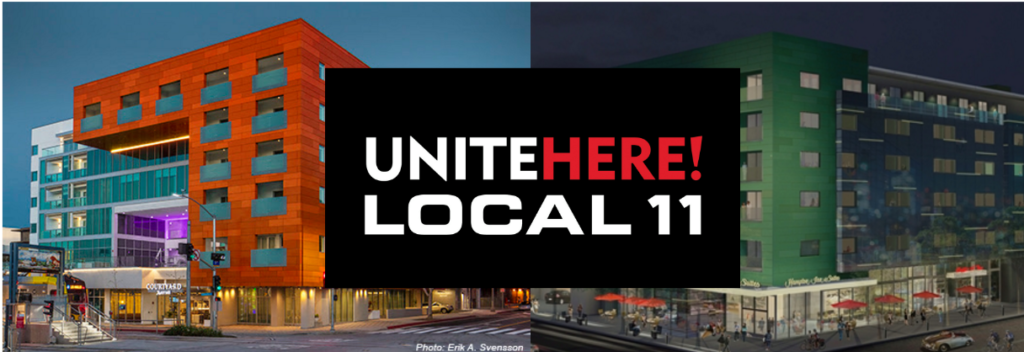Staff at two new Downtown Santa Monica hotels will join the local hospitality workers union after the 70 workers voted to unionize, a vote which was recognized by hotel management last week.
A majority of the 70 workers at the new Courtyard Marriott, which officially opened Friday, and the neighboring Hampton Inn, slated to open in the near future, signed cards to unionize and UNITE HERE Local 11, the regional hospitality workers’ union, will represent them.
UNITE HERE Local 11 was instrumental in negotiating union-friendly terms to be incorporated into the development agreements for the two Expo line-adjacent hotels, designed by local architecture firm Gwynne Pugh Urban Studios, when the City Council approved the projects back in November 2013.
Also in the development agreements were provisions for a $15.37 an hour minimum wage and funding for the Hospitality Training Academy (HTA), a program which targets at-risk youth and trains them for careers as hospitality workers.
“The hotel management, the Union, and the Hospitality Training Academy (HTA) had a breakthrough success on local hiring at these two hotels. Roughly one third of employees at each hotel are Santa Monica residents,” according to a press release issued by UNITE HERE Local 11 on Friday.
Support for the two hotels was unanimous in 2013, in large part due to the 11th-hour agreement between UNITE HERE Local 11 and OTO Development.
Hotels bringing in a significant amount of tax revenue for the city, allowing Santa Monica to fund a robust number of services for residents, workers, and visitors to the beachside city, a fact that City Councilmember Gleam Davis referenced during her vote to approve the projects in November 2013.
“I think it’s so important that we as a community not realize that revenue on the backs of underpaid workers,” Davis said during the City Council hearing at which the projects were approved.
The city levies a 14 percent tax on all hotel rooms, the so-called “bed tax.” All the money that is collected to through this tax goes directly to the city’s general fund in contrast to sales and property taxes, which are collected and reallocated by the county. While Santa Monica gets 100 percent of the “bed tax,” it only gets about 15 percent and 14 percent of sales and property taxes, respectively.
Those tax dollars, paid almost entirely by tourists visiting the beachside city, fund many of the city’s wide range of services, from a low-cost fitness room to a 5-star library to a class 1 fire department. Here’s a more in-depth look at the role hotels play in funding city services in Santa Monica.
Since the Council approved these two projects, the city passed a new minimum wage law that would require all hotels to pay $15.37 starting this year.

